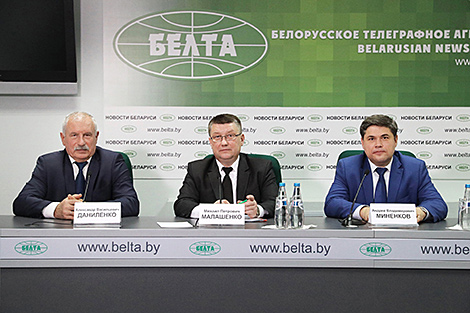Business news
Belarus plans to reduce GDP energy intensity by 0.7% in 2020

Online conference in BelTA's press conference
MINSK, 11 November (BelTA) - Belarus is set to reduce the GDP energy intensity by 0.7% in 2020, Mikhail Malashenko, the Deputy Chairman of the State Committee for Standardization - Director of the Energy Efficiency Department, said at an online conference "Belarus is an energy-efficient country" hosted by BelTA’s press center.
“The country's energy potential should buttress economic growth in accordance with the main targets of social and economic development. Increasing the energy efficiency of the economy is one of the priorities of the state. It is no secret that the growth of gross domestic product by 1% entails an 0.3% increase in fuel and energy resources. Improving the efficient use of energy resources is crucial for solving pressing problems, including climate change, economic development and energy security faced by many countries," said Mikhail Malashenko.
According to the latest data of the International Energy Agency, Belarus is comparable to Finland in terms of GDP energy intensity and has slightly overtaken Canada. “But at the same time, the energy intensity of Belarus' GDP is 20% higher than the global average. The main goal is to make sure GDP energy intensity does not increase. We plan to reduce it by 0.7% in 2020,” he said.
According to the director of the department, the state energy saving program is the main tool of the energy saving policy. Since 1996, Belarus has implemented a national or state energy saving program every five years. Its aim was to save 5 to 7.5 million tonnes of fuel equivalent over a five-year period. “These goals were successfully achieved. The task for 2016-2020 is to save 5 million tonnes of fuel and energy resources. Launch of energy sources running local fuels can be considered a major achievement of the regional offices of the Energy Efficiency Department and the whole utilities sector over the past five years. Some 2,700 out of 3,800 energy sources in the utilities sector have already been converted to local fuels, mainly wood chips and peat,” said Mikhail Malashenko.
The emphasis in the next five years will be made on electrified neighborhoods development, new technologies to use electric energy, including for heating in small settlements, and transfer of technological cycles from the use of natural gas to electrical technologies.







 print version
print version make home page
make home page add to bookmarks
add to bookmarks

